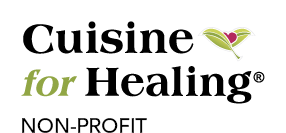First off, what is glyphosate? Glyphosate is one of the most widely used pesticides in the United States and is the active ingredient in herbicides like Roundup and products used to kill weeds. It is also used on genetically modified crops that are altered to have resistance to pesticides, the crop survives but the weeds and insects around it die off. Glyphosate can be found in agriculture fields, in yards of homes, on playgrounds, and in parks. While the current legal amount of glyphosate allowed in food is reportedly not harmful, the levels of this pesticide found in Americans have increased significantly over the past couple of years, raising many red flags. Researchers are looking into the long-term impact glyphosate will have on the health of our population.
Consuming organic foods is one of the best ways to reduce the amount of glyphosate in our bodies. According to the U.S Department of Agriculture, USDA certified organic label foods must be grown and processed according to federal guidelines addressing, soil quality, animal raising practices, pest and weed control, and use of additives, these guidelines are as follows:
- Produce has to be grown in soil that had no prohibited substances (synthetic fertilizers and pesticides) applied for three years prior to harvest.
- Meat requires that animals are raised in living conditions accommodating their natural behaviors (ability to graze), fed 100% organic feed, and not administered antibiotics or hormones.
- Processed, multi-ingredient food prohibits artificial preservatives, colors, or flavors as additives.
Realistically it is nearly impossible to escape pesticides in this day and age. Even organic crops can pick up glyphosate residue from soil particles that were carried by the wind. Following an all-organic diet is the simplest way to reduce your exposure to pesticides, although shopping organic may not be an option for everyone due to increased cost and lack of accessibility. Hopefully, organic products will become more normalized, thus making it a more affordable option for consumers. In the meantime, the Environmental Working Group has compiled two lists ranking produce with the highest and lowest pesticides. These lists are called ‘the dirty dozen’ and ‘the clean 15’. Each list is updated annually. The 12 fruits and vegetables with the highest quantities of pesticides are known as the dirty dozen, it is recommended that these items always be purchased organically. Produce listed on the clean 15 have the lowest pesticide amounts and are safer to purchase conventionally.
- The Dirty Dozen: Strawberries, Spinach, Kale, Nectarines, Apples, Grapes, Peaches, Cherries, Pears, Tomatoes, Celery, Potatoes
- The Clean 15: Avocado, Sweet Corn, Pineapple, Onion, Papaya, Frozen Sweet Peas, Eggplant, Asparagus, Cauliflower, Cantaloupes, Broccoli, Mushrooms, Cabbage, Honeydew Melon, Kiwi
While Cuisine for Healing observes some produce containing lower amounts of pesticides may be safer for consumption, we always use organic produce to ensure our clients eat as healthfully as possible when they order from Cuisine. See below for the list of Cuisine for Healing standards.
Cuisine for Healing Meals contain:
- Locally grown and processed organic grass-fed beef (hormone-free and antibiotic-free)
- Free-range organic chicken and turkey that is hormone-free and antibiotic-free
- Ocean caught fish
- Organic vegetables and fruits purchased weekly
- Organic dry goods, whole grains, nuts and seeds
- Organic, hormone-free dairy products and eggs
- No MSG, soy, or trans fat
- No artificial, colors, flavors or sweeteners
Resources:
Environmental Health News (2020, August 11th) Organic diets quickly reduce the amount of glyphosate in people’s bodies. Retrieved from: https://www.ehn.org/glyphosate-organic-food-2646939278.html
EWG’s 2020 Shopper’s Guide to Pesticides in Produce (2020) Retrieved from:https://www.ewg.org










